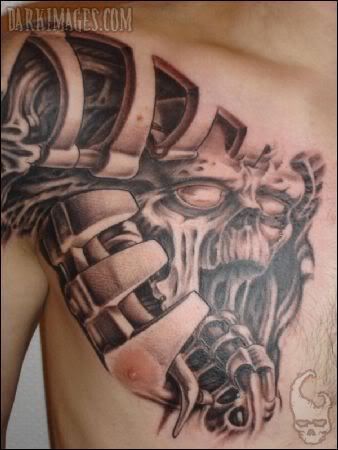 Abstract Theme For Body Art Painting From Asian Art
Abstract Theme For Body Art Painting From Asian ArtArt is usually divided in the main categories "abstract" or "realistic". But the difference between abstract and realistic painting techniques shouldn't be absolute. As long as abstract is just abstract and realistic just realistic, there's no movement or development. Painting becomes interesting right where abstract and realistic painting meet. Realistic paintings are immersed with abstract aspects like color, composition, forms and texture - and abstract paintings that are really only abstract don't mean anything to a human anymore. Good abstract art always has some (new and creative) referral to our memory of sensory perception.
When you paint realistic, you need some abstract skills to make good paintings. With an eye for color, composition and form, you can analyze your painting, gain some visual distance to it. That enables you to improve your painting. And in abstract painting, you also need to have some realistic painting skills. The best abstract painters were those, who had an old fashioned training in realistic oil painting techniques.
Even when we make photo's, we don't depict reality or nature 'as it really is'. We choose subjects, lighting, a composition. The same thing happens when we make realistic paintings. The sky is blue and trees are green - in our minds - but a closer look shows that things can have all kinds of colors, and that you can play with the mood of picture by choosing specific subjects, props, or a specific time of the day. This goes even more in realistic painting - you build up all the visual elements yourself.
In abstract painting, there is no absolute 'abstractness' either. Even the square of Malevitsch makes some reference to certain crystal shapes, to furniture, to things on earth.
When we make abstract paintings, there are always elements present that refer to reality, or, our experiences as sentient beings. "up" and "down" are general terms, but they have specific meanings - "down"you expect to find a bottom, something solid, to stand on, and "up" you expect air, and some light. That would be a natural situation. It can be the other way around, of course, but then you have quite a different mood (the perspective of someone hanging from a cliff, staring in a void down below - very stressfull)
Every visual element - color, form, proportions - refers to something. Red is a fruit color, a color of passion, and blue is a sky-color, a distance-color. Painting a red sky creates drama. And painting blue food creates an alienated, distant and unnatural look. When you take this knowledge into abstract painting, you can make use your work to communicate meaning.
The main difficulty in this is, that it's hard to perceive this natural state. It's what we are. Trying to experience what you are is like: a fish, trying to become aware of the water he's in. But painting is the best way to learn this way of perception. You only have to relate to your canvas, with your own body as referring material. Subtlety is the key.
This is important because art shouldn't be dead. Concepts like 'realistic' and 'abstract' are concepts that remain dead when taken as given objects, but they come alive when you connect them to each other. This is where reality is actually formed. There is no such thing as a given reality - the objectivity you find in a given situation is material and dead. Which is a lie, because reality is not dead. It's alive. As a living thing, it can only be recognized by a living person, who tells a story, showing what he or she has seen and learned.
Painting becomes interesting where realistic and abstract painting are connected. Then realistic painting goes from: shaping things the way we think they exist to: re-creating reality in the way YOU saw and experienced it. And importing realistic elements in abstract painting enables you to give new meaning to the things you paint. Your subject may be material (a portrait, landscape or such) or immaterial (a mood, concept or feeling). But when you make to yourself this demand of meaning, that is: a referral to reality, that's where equal, valueless colors, strokes and geometrical shapes turn into meaningful colors, forms and gestures.You might even give an outer appearance to things that didn't yet have an outer appearance.
In abstract art painting, it does make a difference if you take a naturalistic subject and paint it in a new way, or if you paint really abstract and try to generate meaning. In the first case, you still work with an 'outer' reality, and when working really abstract, you directly use your body, and the way things feel in your body, as a referral, a medium that tells you what is real. I might be idealistic, and vague, but I believe this is where a new kind of reality is really formed. This kind of objectivity is what gives the real value of art. The body is the key, because we all roughly have the same bodies. We all have hearts, livers and kidneys. Maybe it's time we start to use them.





No comments:
Post a Comment